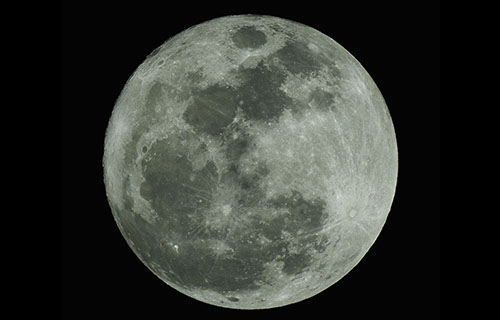Though data from orbiters have suggested presence of води ice, the exploration of місячний craters in the polar regions of moon has not been possible due to the absence of suitable technology to power місячний rovers in the perpetually dark, super cold areas having a temperature of –240°C. The project PHILIP (‘Powering rovers by High Intensity Laser Induction on Планети’) commissioned by European Простір Agency is ready to develop prototypes that would provide laser power to these rovers in an effort to explore evidence of existence of води in these craters.
Moon не обертається навколо своєї осі, оскільки обертається навколо Землі, отже, інший бік Місяця ніколи не видно із землі, але обидві сторони отримують два тижні сонячного світла, а потім два тижні ночі.
However, there are sunken areas in craters situated in the polar regions of moon that never receive sun-light because low angle of sunlight that leave the deep interiors of the craters in shadow forever. This perpetual darkness in the polar craters make them super cold in the range of –240°C corresponding roughly to about 30 Kelvin i.e. 30 degrees above absolute zero. The data received from the місячний orbiters of ESA, Іокі та NASA have shown that these permanently shadowed areas are rich in hydrogen, suggestive of presence of води (ice) in these craters. This information is of interest for science as well as a local source of ‘води and oxygen’ for future moon human habitation. Therefore, there is a need of a rover that could go down to such craters, drill and bring sample for testing to confirm presence of ice there. Given місячний rovers are usually solar powered, this has not been achieved so far because it has not been possible to ensure power supply to rovers while it explores some of these dark craters.
Одне з міркувань полягало в тому, щоб мати ядерні ровери, але вони були визнані непридатними для дослідження льоду.
Взявши приклад із повідомлень про використання лазера для живлення дронів, щоб тримати їх у висоті протягом більш тривалого часу, проект ФІЛІП (‘Powering rovers by High Intensity Laser Induction on Планети’) was commissioned by European Простір Agency to design a complete з лазерним живленням дослідницька місія.
The PHILIP project is completed now and the ESA is one step closer to powering місячний rovers with lasers to explore the super cold dark місячні кратери біля стовпів.
ESA would now begin to develop prototypes for exploring the dark craters that would provide evidence for confirmation of the presence of води (ice) leading to realisation of human dream to inhabit this satellite.
***
джерела:
Європейське космічне агентство 2020. Співпраця та підтримка / Космічна інженерія та технології. Лазерний ровер для дослідження темних тіней Місяця. Опубліковано 14 травня 2020 р. Доступно в Інтернеті за адресою http://www.esa.int/Enabling_Support/Space_Engineering_Technology/Laser-powered_rover_to_explore_Moon_s_dark_shadows Доступ 15 травня 2020 року.
***






































